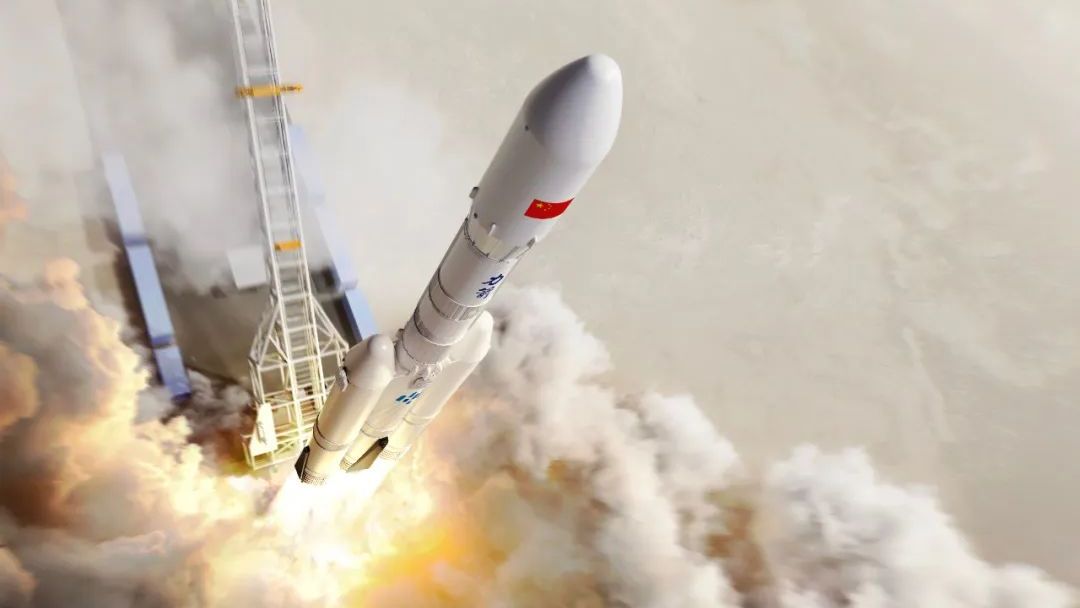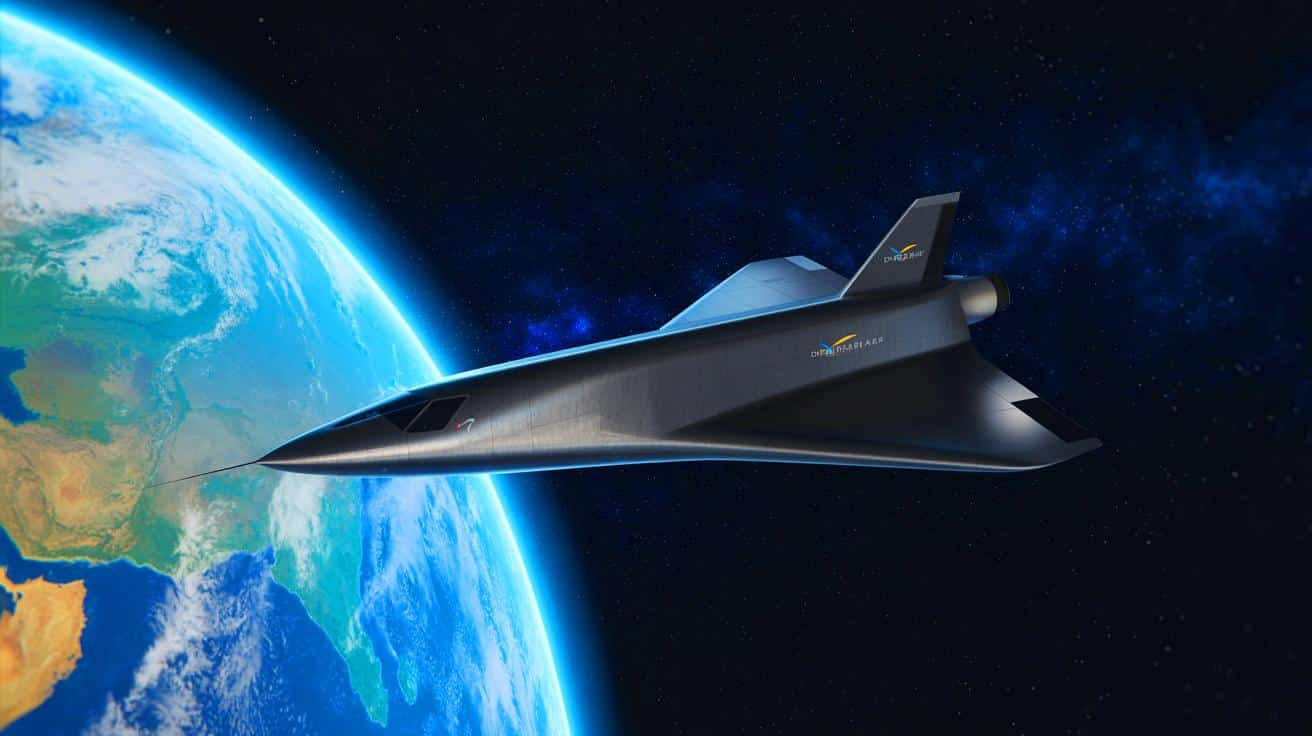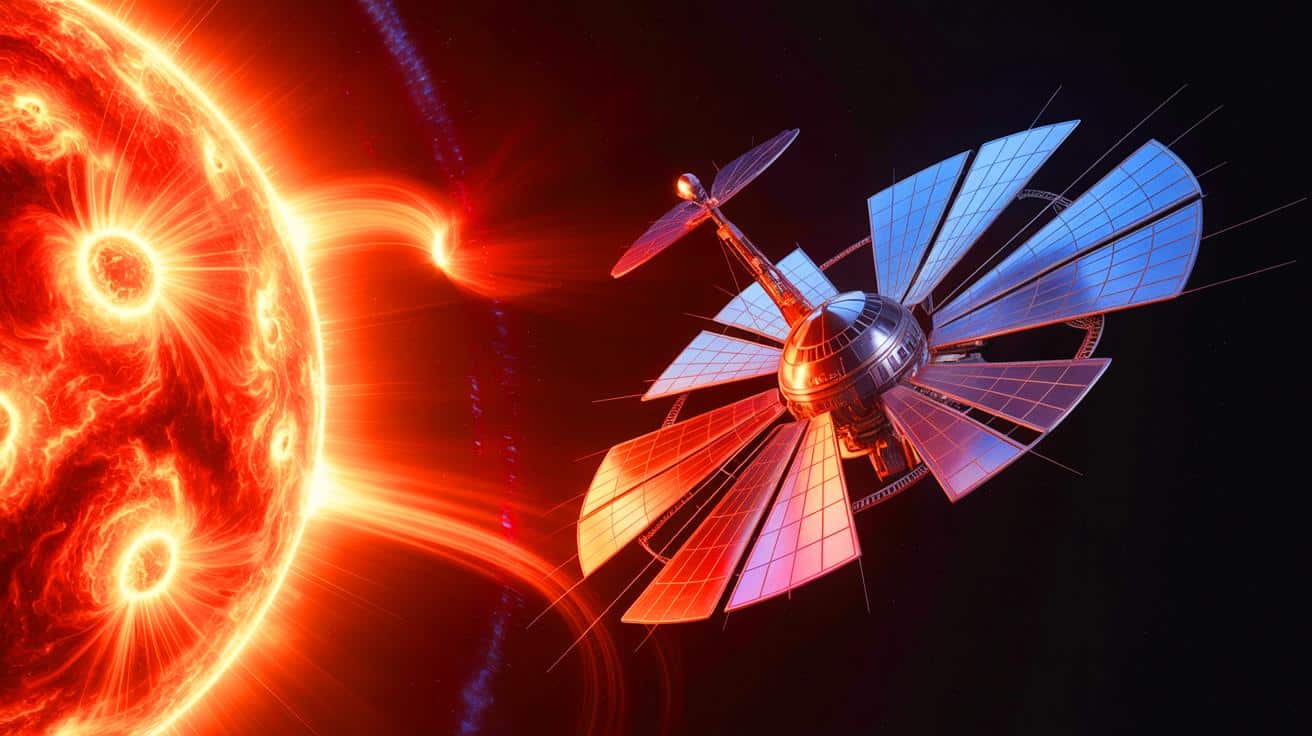There once was a dream of cities in space — vast cylindrical habitats, self-sufficient and populated by millions who would look down on the Earth from their lofty perch.
Back in the 1970s, one serious scientist believed that by now this dream would have been a reality. That scientist was Princeton University professor of physics, Gerard K. O’Neill, and, for a few years, his dream of living in space made him a household name. He appeared on television, wrote a best-selling book and was invited to testify before the U.S. Congress about his vision for the future.
It’s all a far cry from the reality of 2025, where not many people get the chance to live in space, save for the 290 astronauts who have spent time on the International Space Station so far as well as the handful of astronauts stationed on various simple space stations such as the Russian Mir or China’s Tiangong.
O’Neill’s vision was best described in his book, “The High Frontier,” first published in 1976. In it, O’Neill explained how, as early as 1990 and as late as 2005, we would be able to build vast cities in space at the gravitationally stable L5 Lagrange point between Earth and the moon, each habitat home to several million people. The concept became so popular that a fan club even sprung up called the L5 Society, which declared as its motto: “L5 by ’95!”
One of the keys to the idea’s success was rotation to produce a centrifugal force mimicking gravity on the inside surface of a cylinder. O’Neill envisaged different sized spherical and cylindrical habitats (and a ring-shaped variation known as the Stanford Torus, not dissimilar to the wheel-shaped space stations in “2001: A Space Odyssey”), but his largest model, “Island Three,” would have been four miles (6.4 kilometers) wide and 20 miles (32 kilometers) long. Inside, on the interior surface, would have been 500 square miles (1,294 square kilometers) of living space, including homes, recreational centers, rivers and parkland. Science fiction fans might recognize this description as describing the interior of the Babylon 5 space station, which was designed with a nod to O’Neill and which also used rotation to simulate gravity.
Living in one of these space habitats would be clean. Industry and agriculture would be based in separate, smaller cylinders close to the main habitats. Commuting between cylinders would take mere minutes, traveling in “commuterspheres” accelerated by electric motors along a cable costing, O’Neill claimed, 50 cents per passenger (in 1970s money).
It all sounds grand and, after decades of disappointment and lost ambition in space, perhaps a little too far-fetched. O’Neill was no crank, but he lived in a different era: one fueled by the potential for space travel following the testing ground that was the Apollo program.
O’Neill was a fan of science fiction, so space stations were probably always a concept he had been familiar with, but the real seed for O’Neill’s “high frontier” came when he was assigned to teach introductory physics at Princeton in 1969. Despite the glories of Apollo, increasing disillusionment with the Vietnam War led many would-be graduates to doubt whether a career in science and technology was worth it, worried that they would be swallowed up by the military-industrial complex, while balancing that with the increasing awakening of environmental concerns, spurred on by texts such as Rachel Carson’s “Silent Spring.”
Realizing he had a challenge on his hands in making his course inspiring enough to change the mindset of his students, O’Neill set about developing engineering problems that also incorporated economic and social aspects for his students to discuss and develop answers to. The first question he set them was: Is the surface of a planet the best location for a technological society to live?
O’Neill clearly thought not, but it wasn’t just science-fiction dreams. His ideas in “The High Frontier” were in part a response to the Club of Rome’s controversial 1972 report “Limits to Growth,” which portrayed a depressing future of overpopulation, environmental damage and resource depletion. The carrying capacity of the planet was being exceeded, the report concluded. Goodness knows what its authors would think of the situation on Earth right now.
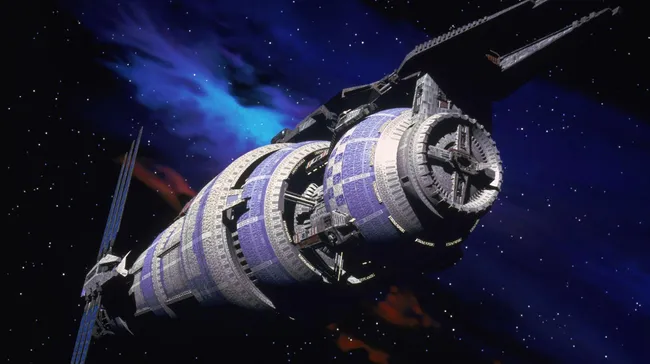
The report was not without its critics, however, who believed that it did not account for technology alleviating at least some of the problems foretold in it. In particular, argued O’Neill, if the Earth’s carrying capacity is being exceeded, then why not just move beyond Earth? Space provides plenty of access to raw materials, solar power, living space and somewhere to put dirty industry without polluting Earth’s environment.
The 1970s already had, or was close to having, all the technology that we would need to build these space habitats, said O’Neill. Writing in “The High Frontier,” he explained how “Island Three is efficient enough in the use of materials that it could be built in the early years of the next [21st] century.”
The idea
Most of the raw materials would come from mining the moon and near-Earth asteroids, and those materials would then be transported for assembly at the L5 via a technology called a “mass driver.”
A mass driver is a kind of electromagnetic slingshot. Powered by sunlight, it would use superconductors along a track to generate an electromagnetic field to accelerate payloads to escape velocity from the surface of the moon or an asteroid. Because there’s no fuel to worry about, there could be a conveyor belt of launches one after the other. Mass drivers are another technology presented in “Babylon 5,” but there they were used as a weapon to bombard a planet with asteroids.
Living in space isn’t just about floating about in a windowless tin can. As already mentioned, rotation to simulate the effect of gravity would be an important step. Studies in centrifuges on Earth show that most humans can cope with a rate of between one and three rotations per minute, but anything above four rotations is liable to disrupt our inner ear and make us nauseous and ill. This rate of rotation has a bearing on the dimensions of the habitats if the aim is to simulate Earth gravity.
So that the habitat is stable, there would need to be two counter-rotating cylinders attached end to end. Some form of day/night cycle is also essential — the biology of terrestrial life has evolved over four billion years around such a cycle, and taking Earthly life out of it is not going to be healthy in the long run, so the habitats would be required to simulate it. O’Neill envisaged that each cylinder could be split into six sections, three window sections with inhabited valleys between them, topped off with hemispherical end caps. Thanks to a system of movable mirrors placed outside the windows, the sun could be seen to remain stationary as it shines through the windows, even though the cylinder is really rotating.
The length of day and seasonal cycles could all be regulated by varying the angle of the mirrors with respect to the sun, which the long axis of the cylinders would point towards.
The amount of sunlight would be an important part of creating a biosphere in the habitats. O’Neill wanted his space nations to be self-sufficient, but creating a viable biosphere is potentially the most difficult aspect of the entire endeavor. To provide for millions of people requires more than simple hydroponics, which is growing plants without soil. A biosphere depends on its soil layer to provide a life-support system, but Earth’s current soil layer has had millions of years of development alongside the evolution of life from microbes to large, complex animals which have all contributed to the soil. Recreating that in just a few years, and getting the biochemistry correct, would be no easy feat. Instead it might require lots of experimental trial and error, to avoid ending up with dead, failed habitats. This would certainly delay how quickly the habitats could be built and populated.
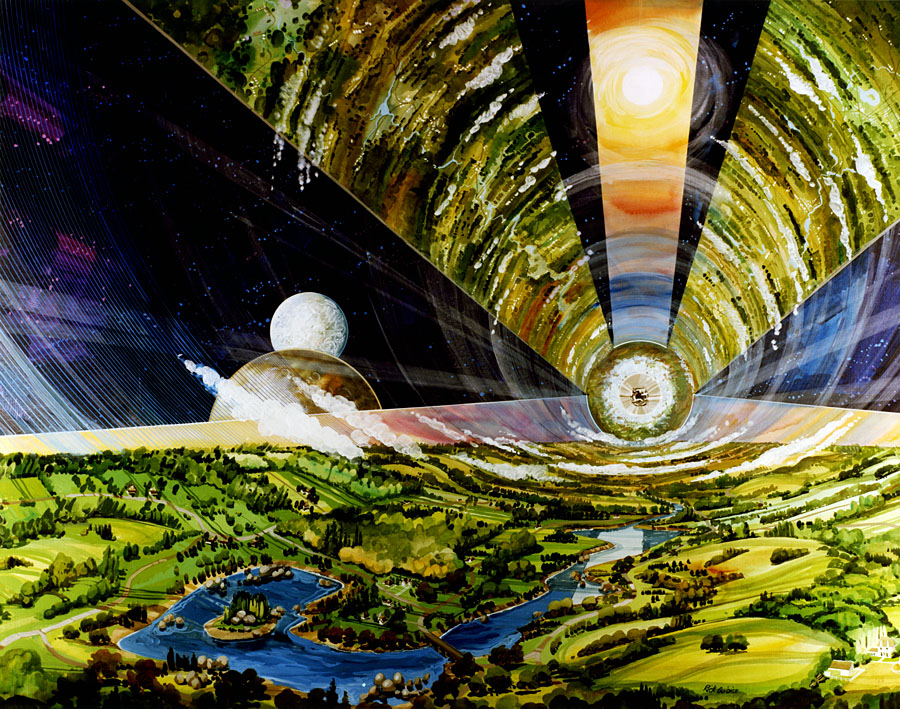
However, get it right and the interior wall of the cylinders between the windows could be filled with parkland, much like what is seen in science fiction, for example inside the drum of the Babylon 5 space station, or the interior of the Nauvoo/Behemoth in “The Expanse.”
“It appears, therefore, that space can provide the ideal conditions for a highly efficient, totally recycling agriculture no longer at the mercy of weather or climate,” wrote O’Neill in “The High Frontier.”
The problems
So where did O’Neill’s plans all go wrong? After all, there’s nothing physically impossible about building such habitats. What made the concept so appealing to O’Neill is that it didn’t require any magic technology, just a lot of challenging engineering problems to be solved.
Nevertheless, a criticism that could be applied is O’Neill was too confident in the technology and engineering that would be required. The best that we’ve built in space so far has been the International Space Station. The kind of technologies required for something like Island Three, or even the smaller, simpler, spherical models of Island One and Island Two, are completely untested even now. With dedication and sufficient funding and resources, we could hone our skills, but it would take time. It wouldn’t be something we could rush.
A second problem was the failure of the space shuttle. When the space shuttle was first conceived, the plan was to have hundreds of launches per year, which would have created the capacity to build the infrastructure in space that would have allowed mining on the moon, or ferried millions of people into orbit. Instead, between the shuttle’s inaugural flight in 1981 and its final flight in 2011, the six shuttles managed only 135 space flights between them.
The cost of building a 20-mile-long (32-km-long) space habitat was also somewhat vague, with O’Neill estimating up to $200 billion in 1970s money, which, accounting for inflation, would be $1.1 trillion in 2025.
In addition, there’s also some troubling social concerns. If the aim is to alleviate overpopulation on Earth, then space habitats are not the answer. Having even tens of millions of people living in space really isn’t going to help when there’s over 8 billion people on the planet.
There’s also the troubling question of who gets to live in paradise in space, away from Earth’s faltering climate, wars, natural disasters and dirty environment. Regardless of all the good intentions of visionaries such as O’Neill, the history of human cities and civilization as a whole tells us that it is more likely to be the rich who can afford to travel into and live in space. Of course, a city of millions of people is going to require tradespeople, teachers, police, administrators, sanitation engineers and so on — all the people that a regular on Earth needs to function — and these people might not be rich per se, but are such workers more likely to come from richer nations?
If so, then again space habitats would simply widen the gap between richer and poorer nations. Would people from developing countries get a fair chance of going to live in a space habitat? Engineering fair and equal access to space might be an even bigger challenge than engineering the design and building of the habitats in the first place.
On the plus side, space habitats would create a place where humans might avoid any disaster that takes place on Earth, thereby reducing the risk of human extinction. It could be argued that long-term survival is the best reason for humanity to venture into space.
There’s also a more abstract reason why we should lament the failure of O’Neill’s vision.
The 1970s concept of space habitats is a demonstration of the vision that we once had in our technology and in ourselves, a vision that in the intervening years seems to have left us. From the vantage point of the 1970s, the 21st century was to be a far-flung time of hope and riches and technological wonders. Yet today, in the real 21st century of war amid growing authoritarianism and sectarianism, and environmental catastrophe, we are left to ask: Did we fail the future, or did the future fail us?
Source link
